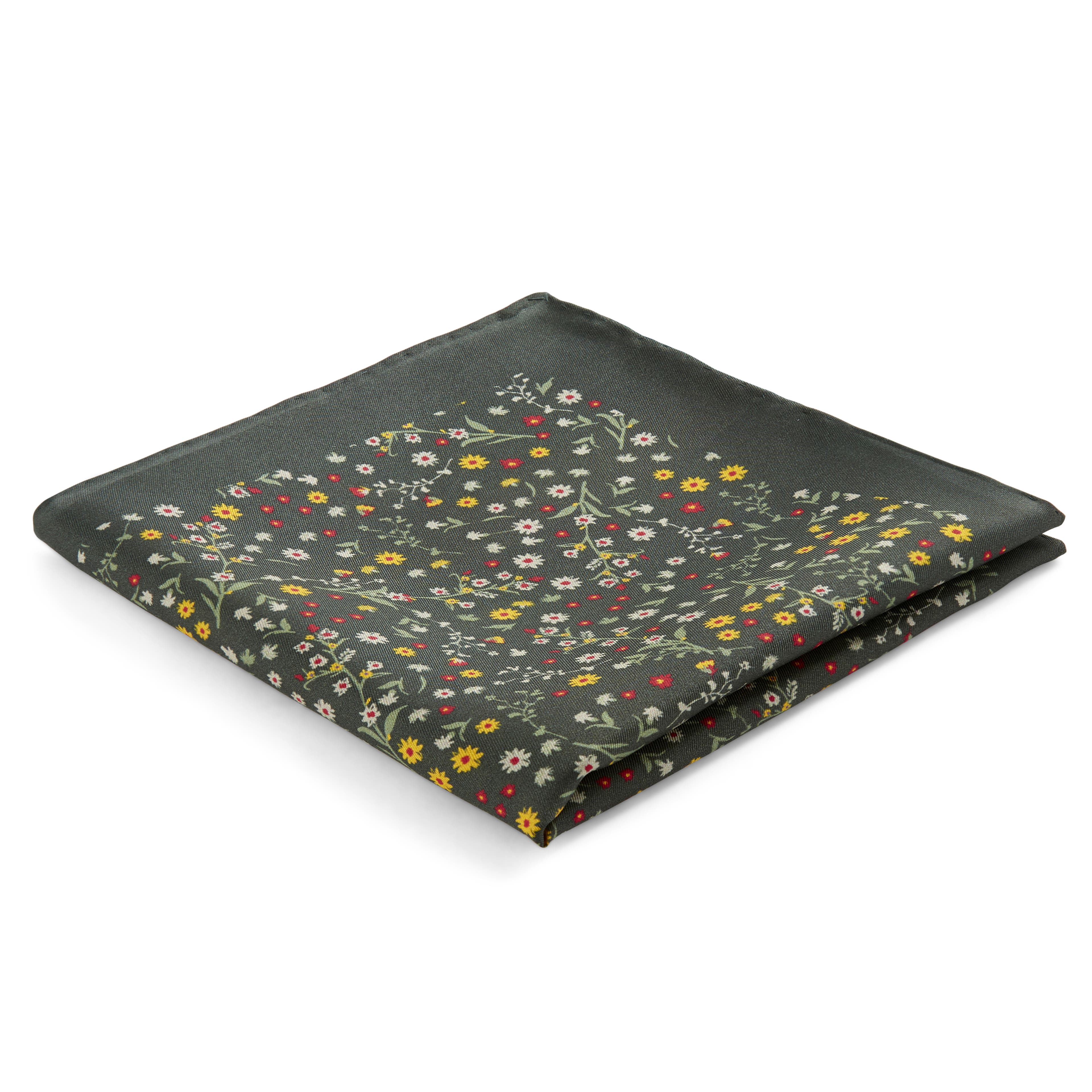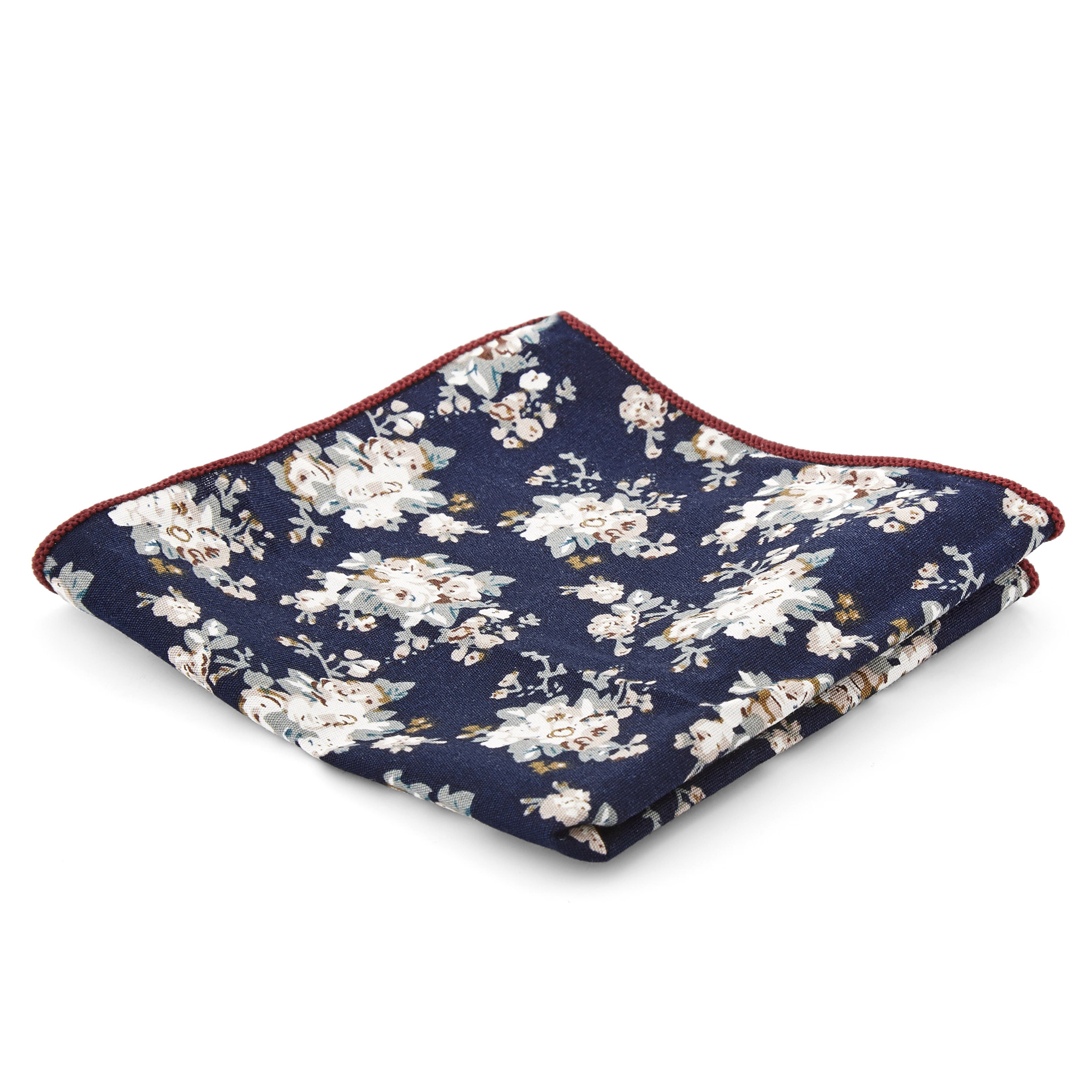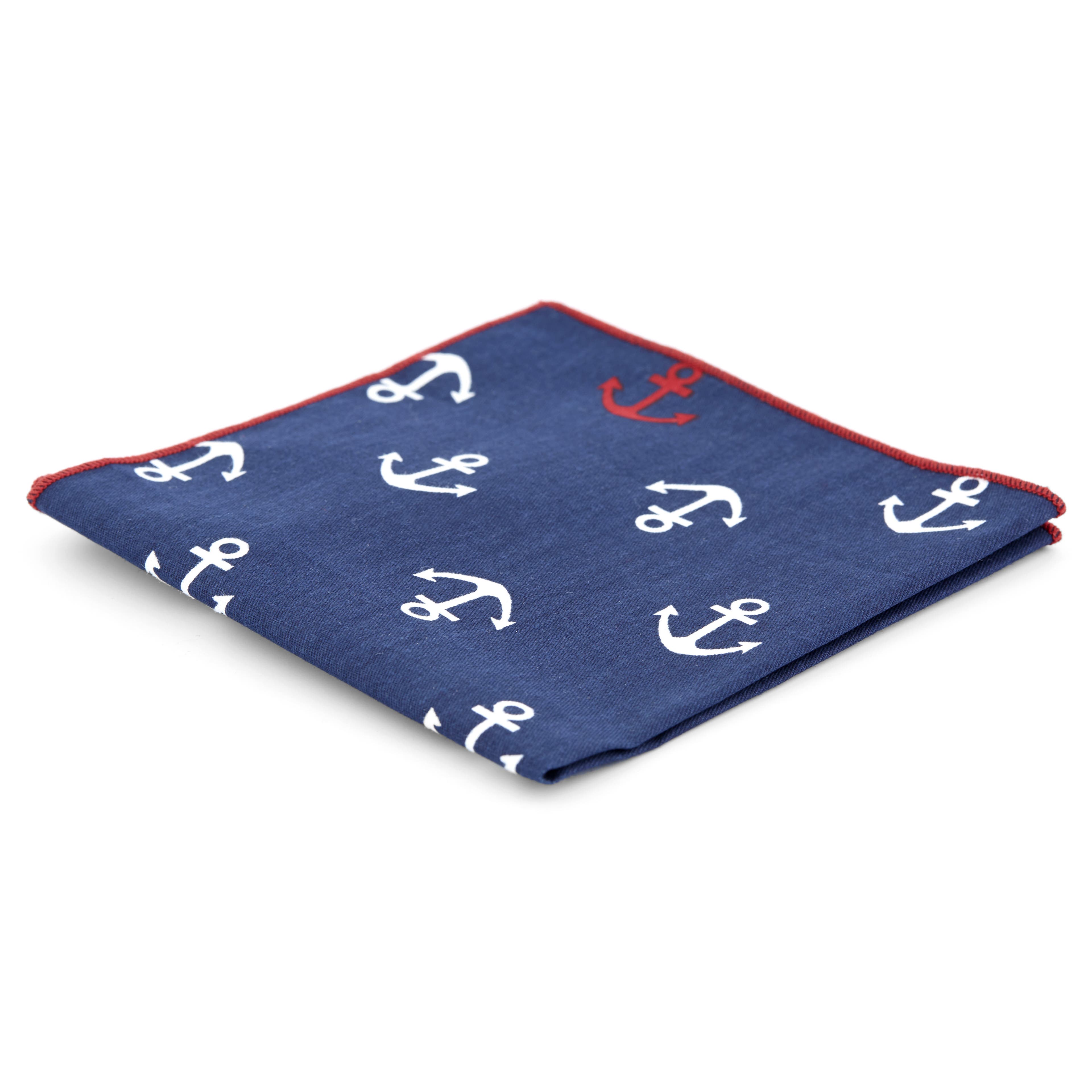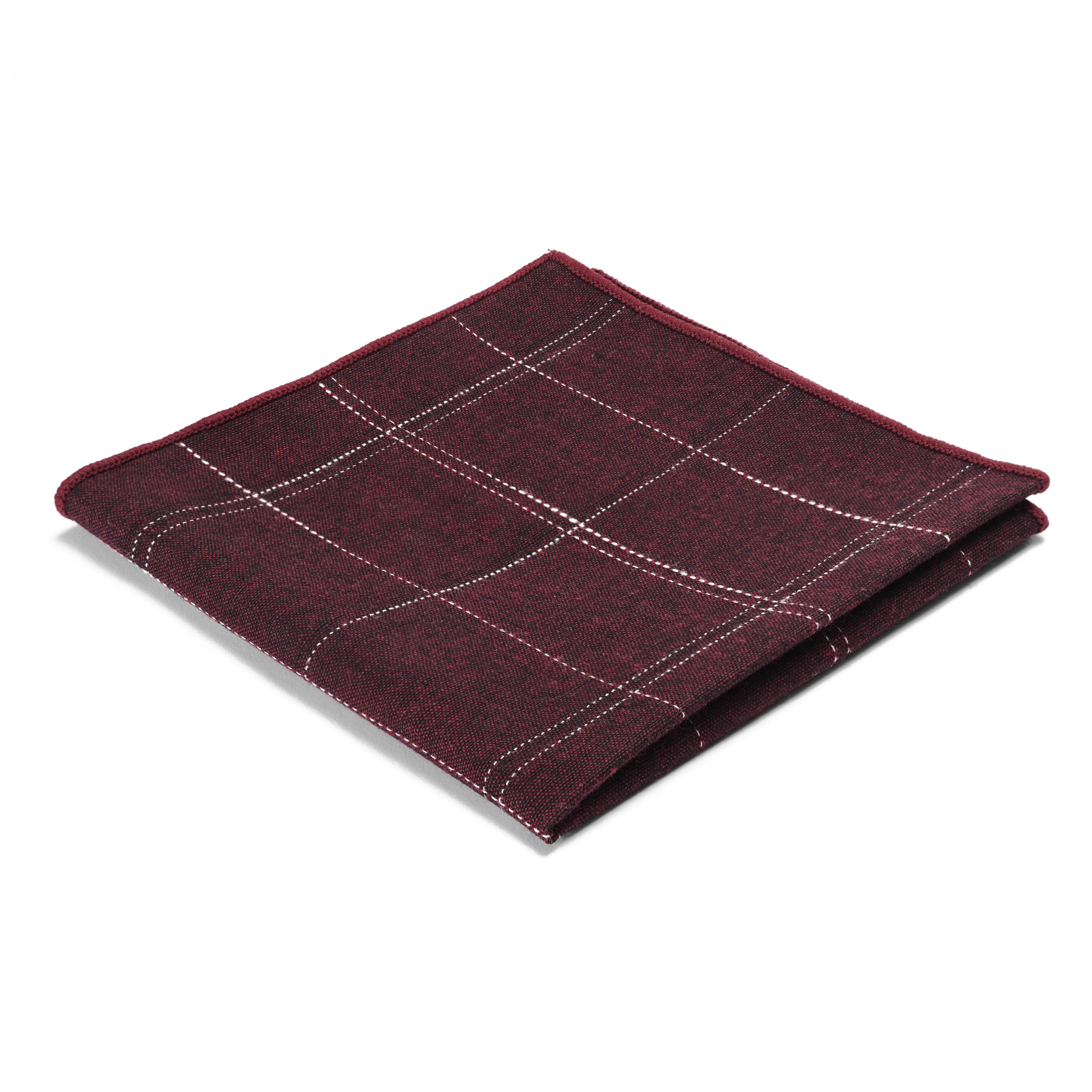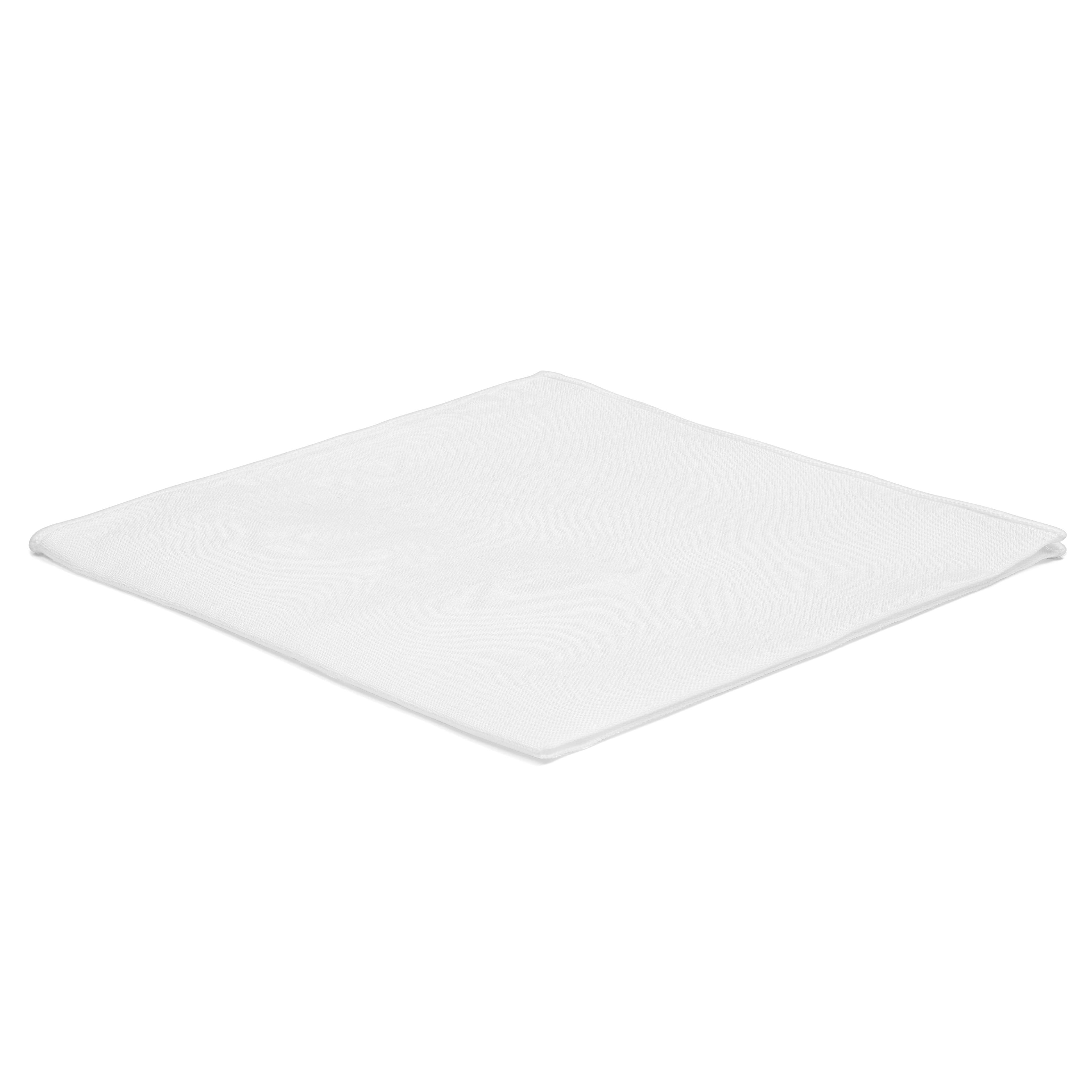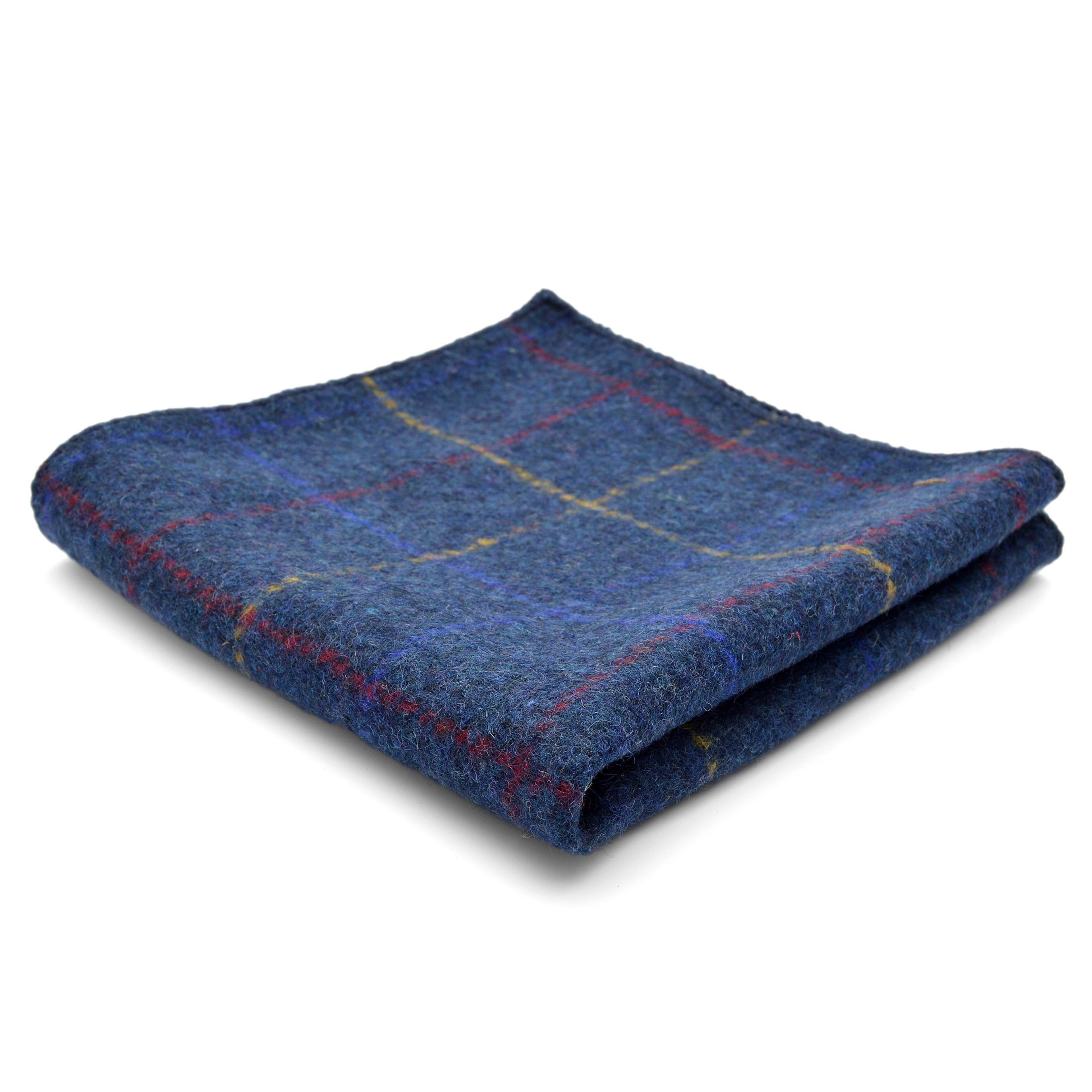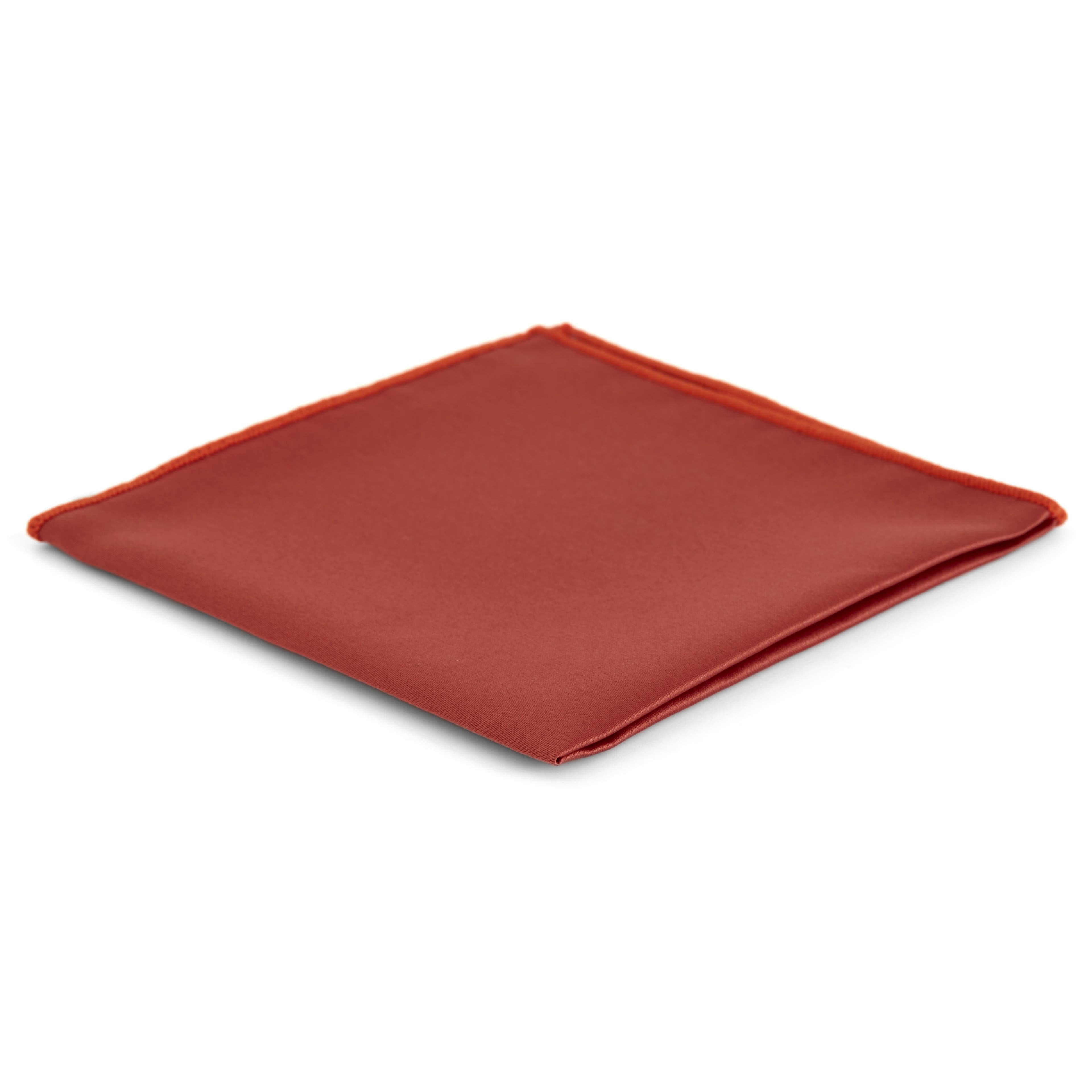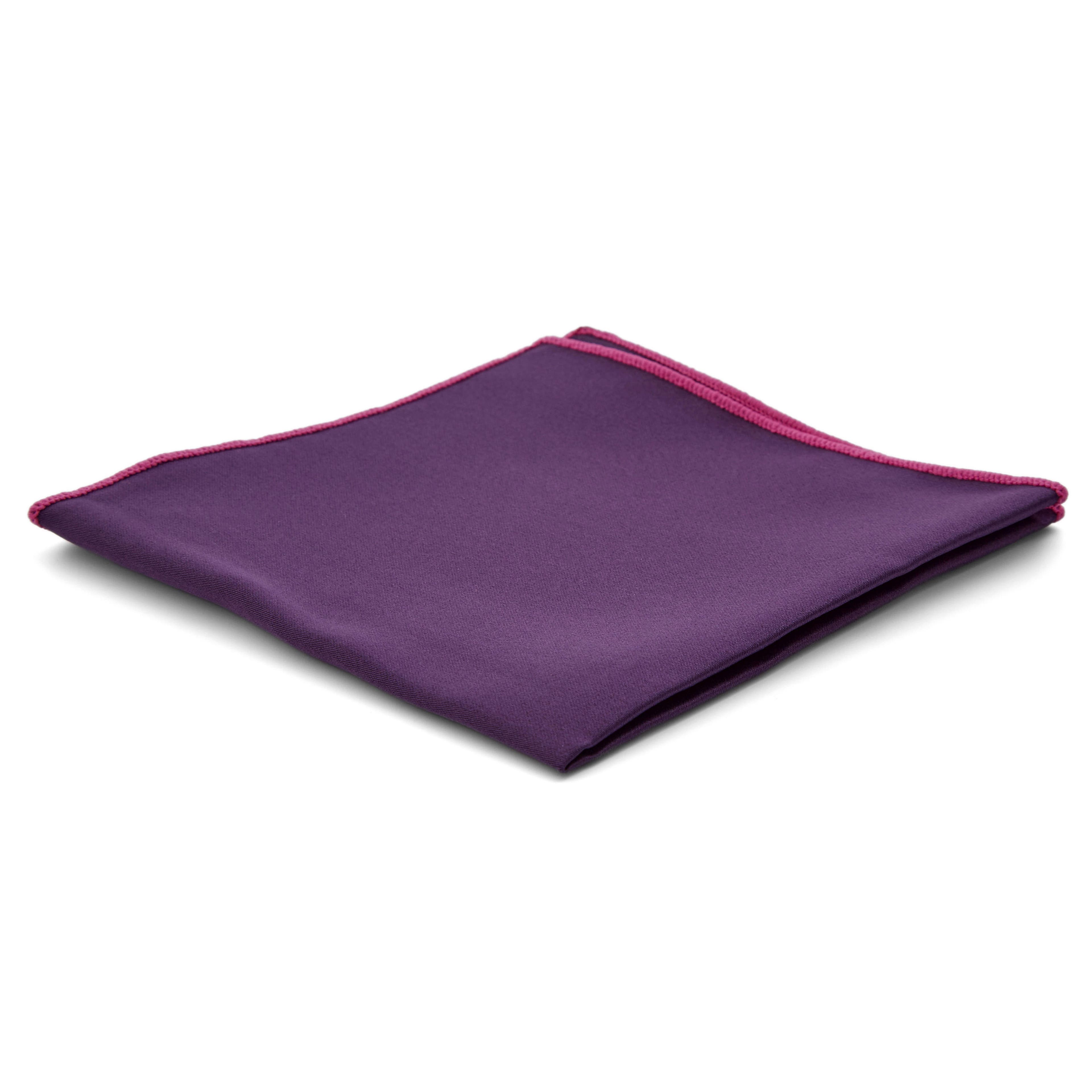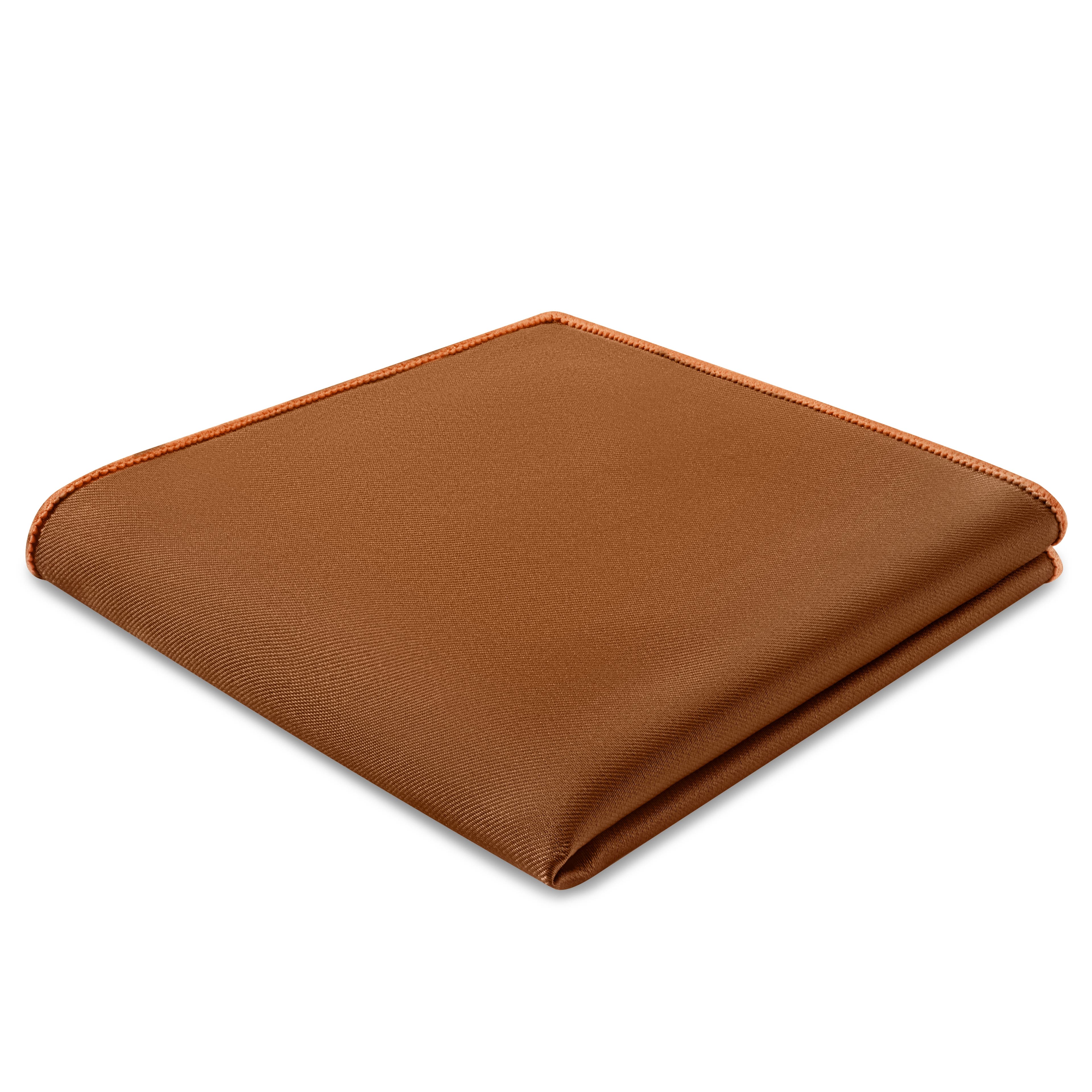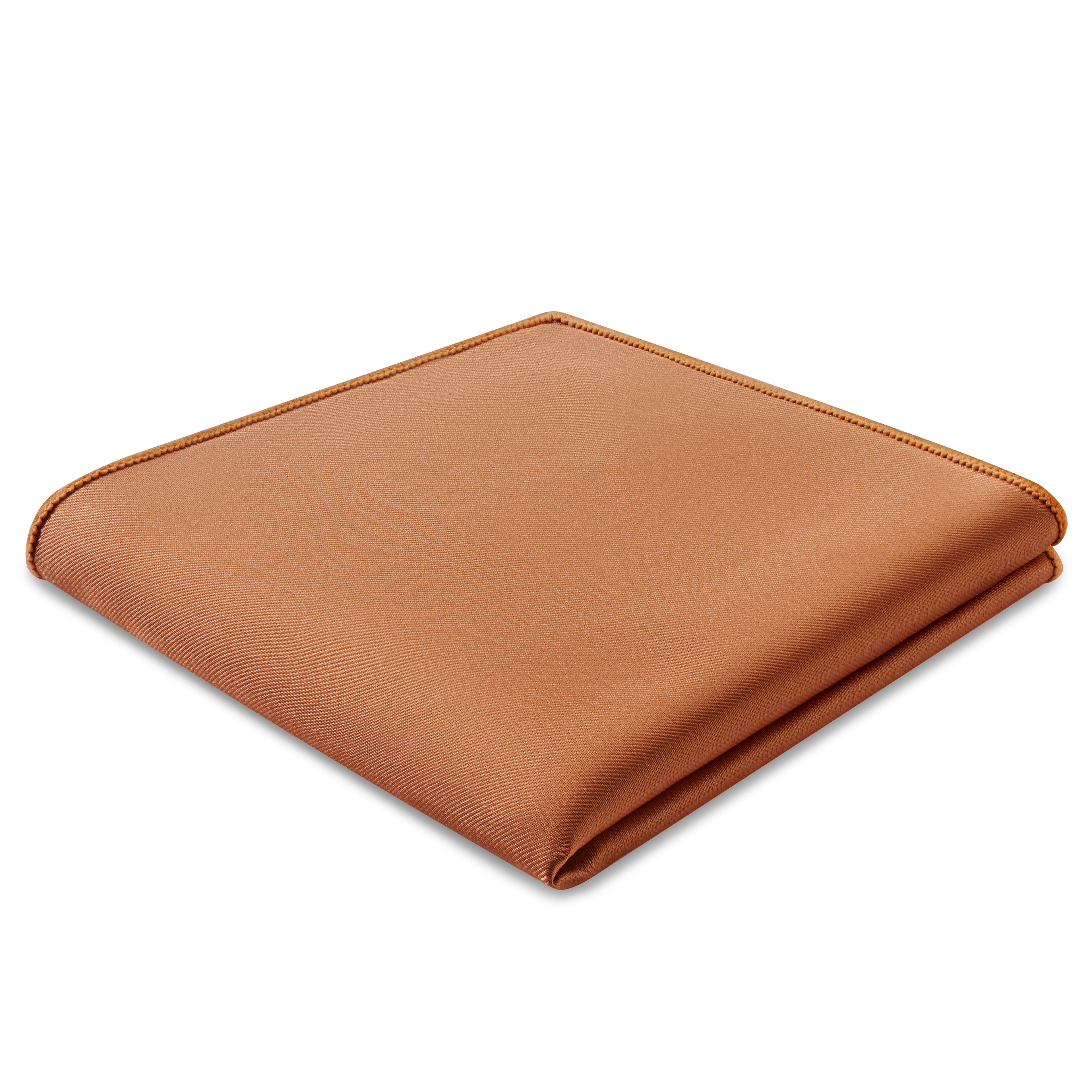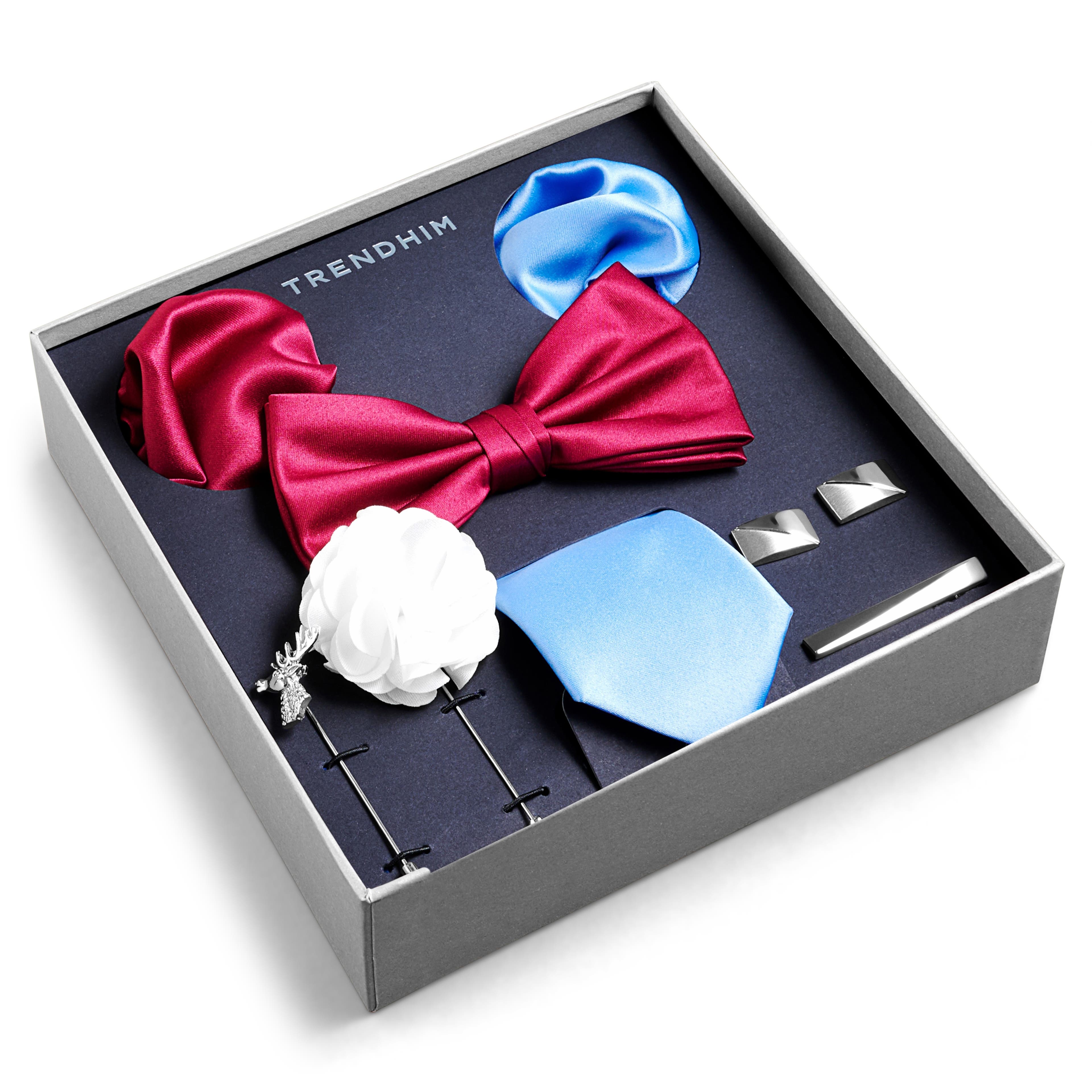The Pocket Square - Your Ultimate Guide
You'll learn everything there is to know about the pocket square. From color theory and fabric picking to pocket square selection for events and everything in between. All in 20 minutes.
The pocket square can make or break an outfit. While you don’t have to be a rocket scientist to pull it off, there’s an art to wearing a pocket square properly so that it matches and enhances the rest of your look, but still stands out enough to catch the eye.
What is a pocket square? A pocket square is a decorative square of fabric that goes into the breast pocket of a jacket or blazer to add some flair to your look.
This guide will teach you everything you need to know to hit that sweet spot, and confidently pull off the pocket square no matter the occasion.
What's The Difference Between a Pocket Square and a Handkerchief?
First things first, a handkerchief is NOT a pocket square. But, the cleanest, crispest cotton handkerchief can be worn as a pocket square in emergency situations.
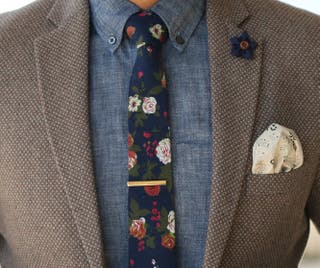
Generally, there are a few differences that mean you’ll want to keep the distinction.
Pocket squares
- Made of several fabrics, including cotton, silk, and linen
- Worn in the outer breast pocket
- Decorative function: not suitable to use for mopping or cleaning
- Silk and linen need to be dry-cleaned and stain easily
- Only practical use for silk squares: cleaning your glasses
- Smaller than handkerchiefs
Handkerchiefs
- Made of cotton
- Stored in any pocket
- Larger than pocket squares: watch for pocket bulge
- Has a practical function, and can be used for almost anything including; Blowing your nose, wiping brow sweat, and impromptu miniature bullfights
In short, remember one for blow, one for show.
Basics of Color Theory
For an outfit to look good, the colors have to go together.
This holds for your pocket square, every other item of clothing, as well as your skin and hair color. Don’t forget the main point of dressing well is to highlight your facial features, and the pocket square can be an elegant way to do so.
Note this means the pocket square shouldn’t be too dominant. Its role is to enhance, not overpower, and when you see an outfit where you think “nice try, but tone it down”, it’s because physical qualities have been muted by loud items of clothing.
Making your color wheel
Now that that’s clear, let’s go back to primary school.
The easiest way to coordinate colors is to know of and use the color wheel, formed of primary, secondary and tertiary colors, called hues.
- Primary colors: Red, Blue, Yellow. These are base colors that can’t be created by mixing other colors. Their natural hue is very bright, and they’re best used to grab attention. They’re often used as highlight colors in motifs and patterns that contrast well with darker backgrounds.
- Secondary colors: Green, Purple, Orange. These are colors that can be made by mixing primary colors with each other. Each one sits directly opposite a primary color on the wheel, providing maximum contrast. We call these complementary colors, and they work to catch the viewer’s eye.
- Tertiary colors: Vermilion (red-orange), Amber (yellow-orange), Chartreuse (yellow-green), Teal (blue-green), Violet (blue-purple), Magenta (red-purple). These six colors are made by mixing a primary and a secondary color together.
You should think of the tertiary colors as distinct hues in themselves as opposed to just ‘shades’ of primary and secondary colors. As such, they have their own complement on the opposite side of the color wheel.
Color schemes
Color schemes are combinations of colors from the color wheel. A basic understanding is a must if you want to master and enhance your style.
As a rule of thumb, the further apart colors are on the wheel, the harder they are to pull off in an outfit.
- Neutral color scheme: white, black or a mixture of the two
- Monochromatic color scheme: one single hue.
- Adjacent color scheme: formed by color directly adjacent on the color wheel, letting you create a nearly monochromatic ensemble with subtle contrast
- Complementary color scheme: mentioned above, these are colors that are directly opposite on the color wheel, creating a bright and bold effect. These colors provide the strongest contrast, unfailing in grabbing the viewer’s attention
- Triadic color scheme: formed of 3 colors which are equidistant on the color wheel, triadic color schemes give a clean and harmonious feel to your outfit, with less contrast than complementary colors
We mentioned that the color of your outfit should also match your complexion for the greatest impact.

So for example, men with high-contrast complexions, e.g. light skin and dark hair, tend to look better with high-contrast colors such as complementary, or near-complementary, palettes.
Men with low-contrast complexions, e.g. light skin and light hair, or dark skin and dark hair, look good with low-contrast outfits, such as monochromatic, adjacent, or even triadic if they want to play with multiple colors.
6 Levels to pocket square color mastery
Level 1: The classic white pocket square. Goes with everything, always looks great.
Level 2: Neutral colors - think grays, browns, and whites. With a neutral tie, your pocket square can be any of these colors depending on your jacket.
Level 3: Monochromatic schemes - pair different shades of the same color for an easy, subtle contrast., like tan with beige.
Level 4: Use adjacent color schemes to give your outfit a certain feel. Example: yellow, amber, and orange. Pairing two or more cool or warm hues for overall harmony.
Level 5: A triadic color scheme balances warm and cool colors to give your look some character, without making as strong an impact as complementary colors.
Level 6: Now you’re rollin’ with the big boys. You’re finally ready for complementary colors - the boldest of them all. A solid choice is an orange pocket square with a navy jacket, or go all out and mix a green piece with a deep red blazer to really make your mark.
Choosing the Right Fabric For Your Pocket Square
When it comes to pocket squares, fabric matters. The big three are silk, cotton, and linen, but you can also find squares in wool and polyester.
Each fabric has different properties, but your main focus will be on texture. Just as with patterns and motifs, you’re aiming for a calculated contrast when choosing which pocket square fabric would be best suited to your outfit. You want to coordinate every piece of your outfit so they go well together, however, they need to each stand alone as well.

So if you’re wearing a fine smooth tie, go for a rougher cotton or wool pocket square. And if your tie is quite textured, go for a nice silk square. The same applies in regard to jackets and shirts.
Pocket square fabrics - Their pros and cons
Below you'll find the most common pocket square fabrics as well as their advantages and disadvantages.
Silk pocket square
.jpg?format=pjpg&auto=webp&quality=75%2C90&width=320)
- Easy to store
- Smooth, luxurious, shimmering
- Contrasts well with wool suit/jacket
- Most common pocket square material
- Versatile, suitable for most occasions
- Soft edges make it perfect for unstructured puff folds
- Usually ultra-thin, so won't bulge your jacket pocket
.jpg?format=pjpg&auto=webp&quality=75%2C90&width=320)
- Expensive
- Doesn’t work well for structured folds
- Easily-damaged by perspiration and bleach
- Difficult to care for - dry clean only
- Quick to crease, tricky to iron
- Not abrasion resistant
- Easily ruins when wet
The Pocket Square - Your Ultimate Guide - Slider 1 - Silk Pocket Squares
Cotton pocket square
.jpg?format=pjpg&auto=webp&quality=75%2C90&width=320)
- Cheaper than silk
- Easy to iron
- Easy to store
- Machine washable
- Stiff edges allow for structured folds
- Strong, durable, resistant to abrasion
.jpg?format=pjpg&auto=webp&quality=75%2C90&width=320)
- Can shrink with hot water washes
- Easily creases, needs ironing
- Risk of mildew when damp
- Dyes can fade over time
Linen pocket square
.jpg?format=pjpg&auto=webp&quality=75%2C90&width=320)
- Extremely versatile
- Rigid edges allow for structured folds
- Supple fabric allows for unstructured folds
- Adds attractive textural variation to almost any jacket
.jpg?format=pjpg&auto=webp&quality=75%2C90&width=320)
- Tends to be more expensive than cotton
- Damaged if washed in hard (high mineral content) water
- Can be machine washed, but detergent/chemicals can damage
- Creases easily, so needs ironing
Wool pocket square
.jpg?format=pjpg&auto=webp&quality=75%2C90&width=320)
- Best for winter months
- Uncommon, interesting texture for pocket squares
- Choice of different types of wool:
- Alpaca wool – silky, lightweight with luster
- Angora wool – very soft with the best heat-retaining properties
- Cashmere – delicate and luxurious
- Camel hair – known for its golden brown color, soft texture, and shine
.jpg?format=pjpg&auto=webp&quality=75%2C90&width=320)
- Large price variation depending on wool type
- Difficult to wash and care for
- Affected by moths and other insects when stored
- Shrinks significantly with heat and moisture
- Dry clean only with mild detergents
- Thick fabric can mean a bulging jacket pocket
Polyester pocket square
.jpg?format=pjpg&auto=webp&quality=75%2C90&width=320)
- Very cheap
- Lightweight
- Quick to dry
- Strong fabric
- Crease-resistant
- Easy to store, low risk of mildew
- Keeps its shape and size over time
.jpg?format=pjpg&auto=webp&quality=75%2C90&width=320)
- Can have artificial sheen in the light
- Hard to remove stains
Pocket Square Edge Types
The edge of your pocket square is the biggest differentiator between different pocket squares, both in terms of fabric, and in terms of quality.
Depending on the fold, the edge is the most visible part of your square, and poor-quality edges are quick to fray, making it unwearable.
There’s an inherent difference between edge types, depending on your fabric choice. Silk squares have supple, soft edges that are perfect for puff folds, but make structured folds almost impossible.
Conversely, linen and cotton pocket squares tend to have more rigid edges, making them suitable for structured folds.
But regardless of fabric, there are some things you need to know about the quality of edges so your new piece doesn’t fray on the second outing.
The vast majority of known brand's pocket squares are machine stitched. This type of square will do for all but the most discerning and comes with a variety of edge types. However, for those looking for the very best, they can opt for a hand-rolled model.
See below for an overview of the various types of edge and stitching.
The hand rolled pocket square edge

The best quality pocket squares that money can buy have edges that are hand rolled into a tight tubular shape, with hand stitching, roughly 5 or 6 stitches per inch.
Handmade, the edge is slightly uneven, giving it a uniquely crafted finish. Such attention to detail does come with a price tag of course, so depending on your needs and budget you might want to consider the next step down.
The imitation hand-rolled edge

Machine stitched, this edge is straighter than hand-rolled, but the stitching is more visible and rolls over the edge.
The Parallel edge

This type of edge is flatter with a simple single line of stitching. This type of edge is also machine stitched.
The Z-shaped edge

This edge is made with a machine and similar to the parallel edge. The Z-shaped is flat but with a wave stitch pattern.
The embroidery edge

The embroidered edge is made with a machine. It is a tight hard spiral that adds some rigidity to your square, making it better suited for structured folds with 2 or more points.
Final word about edges
A final word of warning about pocket square quality. It’s common, especially with polyester models, to find mass-produced pieces with sloppy corners and loose, irregular stitching. These pieces will quickly fray and aren’t worth buying.
What Size Should Your Pocket Square be?
The size of your pocket square will depend on your jackets and the material you choose. Here are a few things to bear in mind.
- Pocket squares range in size from 9 7/8" to 17 3/4" (25-45 cm).
- The ideal size is between bulging out of your pocket and falling into it.
- American and English brands tend to make larger squares for lined breast pockets.
- Italian brands tend to make smaller pocket squares for patch pockets with less depth.
- Thicker fabrics like linen, cotton, and wool need to be smaller while lighter fabrics like silk come in bigger sizes.
- Too small (especially with silk) and the fold loses its shape. A decent pocket square shouldn’t be smaller than 10".
- Compare the dimensions of the pocket square (length and width) and the pocket it’ll be housed in to see if it’ll work
- Consider the weight of a pocket square to see if it’ll be just right.

How to Wear a Pocket Square
Now that you know the basics, which incidentally apply to your overall style and aren’t pocket square specific, you need to know how to wear a pocket square.
There are two main factors in wearing a pocket square correctly;
- Choose the right pocket square, this is where the above section comes in handy.
- Choose the right fold for the occasion, your outfit, and your pocket square. More on that later.
Now that you know everything you need to (you DID read the first section right?), here are some tips on picking the right pocket square, followed by an overview of the most important folds.
Choosing the right pocket square
- The cardinal sin of dressing is looking TOO coordinated and studied. It looks try-hard and kills your flair. This applies to pocket squares as to everything else.
- Your outfit should work as a whole, but each piece should contrast and complement, not match perfectly, with the others
- Choose your fold and square depending on your mood for extra impact
- Stick to one ‘loud’ piece per outfit. A bright, boldly patterned pocket square overwhelms when paired with equally bold neckwear, but enhances a simpler
tie worn with solid colors. - Beyond colors and motif, consider different fabrics and when they’re most suitable. Silk and cotton are the most versatile, and always look good.
- Look at the colors in your current wardrobe and start thinking about what you could match them with. The more comfortable you feel, the more daring you can be with colors, patterns, and materials.
- Solid colors are always your safest option, especially for formal or business wear. The darker the color, the more formal it is. Plain white’s the exception - it’s always appropriate.
- Prints make your pocket square less formal. The wilder the print, the less serious the square.
- No more than 3 patterns in your outfit
- Coordinate colors with other accessories, such as earthy tones with brown shoes
- Don’t have the product label or brand logo on show
How to Fold a Pocket Square
Below you'll find a few of the most popular folds, if that's not enough, check out: Trendhim's 50 Ways to Fold a Pocket Square
The presidential fold

The 1 peak fold

The 3 point crown fold

50 Ways to fold a pocket square
There are almost no unspoken rules regarding the folds of pocket squares, so even though we offer suggestions, you can fold however you please. Just in case you didn't like any of the ones above and still need inspiration, we've created what might be the most comprehensive library of pocket square folds with instructions here:
Dressing for the Occasion - Different Styles
We’ve given you the lowdown on etiquette, colors, fabric and how they all work (and shouldn’t work) together. With this in mind, here are a few social scenarios with hints and tips to ensure you’re at the top of your game.
Pocket squares for weddings
- Key fabrics: Silk, velvet, cashmere, wool, tweed, cotton, and linen if you're attending a beach or more ‘relaxed’ wedding.
- Neck gear: Always -
Necktie or
bow tie - Colors: Depends on the timing of the wedding. An evening reception tends to be more formal than a day - go dark. If it’s a day wedding, go light - neutral and pastel colors.
- Rules:Don’t match with the wedding party, don’t overshadow the bride or groom, adhere to the dress code - a beach or a more relaxed wedding will have a more relaxed aesthetic. A tuxedo is an option if the dress code permits. No monochrome looks.
- Types of folds:One tip,
The puff,
The Presidential
Pocket squares for businessmen
- Key fabrics: Cotton, linen, tweed and wool (take the weather into consideration, too)
- Neck gear:Necktie
- Colors: Anything dark - navy, burgundy, green, burnt orange. As long as it’s a dark hue, you’re good to go. White for the pocket square is a great option as well
- Rules: Generally, keep it simple and demure, especially in a conservative work environment. If you’re a creative, you can loosen the reins and be, well, creative
- Types of folds:The one tip,
The two tip,
The three point crown,
The four point crown,
The winged puff or
The presidential. You could also try two separate folds that complement each other (in one breast pocket)
Pocket squares for Sunday lunch
- Key fabrics: Linen, cotton, tweed, silk - but only for the pocket square
- Neck gear: None! Leave the two top buttons of your cotton shirt undone, throw on a jacket with a contrasting texture. You can also opt for a simple crew neck top
- Colors: You have free reign here. Absolutely anything you like! Just make sure the color palette is harmonious
- Rules: Keep it casual. Chinos or linen blend trousers are a safe bet. This look is a lot more simple because you don’t have to worry about contrasting with the tie - use the pocket square to pick up color from your shirt and/or jacket.
- Types of folds: We encourage you to have some fun here with the more extravagant folds -
The ship,
The sail,
The three petals,
The 4 point crown,
The four stairs,
The fan,
The bird of paradise,
The bishop's hat,
The fleur de lis,
The rolled rose,
The pistil flower or
The double rose
Storing Your Pocket Squares
Once your collection of pocket squares starts to grow, you’ll want to find a good way to store them so that they’re easy to find and protected from damage.
Luckily for all of us, pocket squares are generally made from pretty resistant fabrics: silk, cotton, or polyester. This is good news, as you don’t have to worry about insects when storing your pocket squares for long periods of time as you would with wool.

However, the main damage to worry about, regardless of material, is mildew growing on wet pocket squares that aren’t able to dry out. Your pocket squares shouldn’t be getting too wet, but it can happen from spillage or rainfall. Know that if you store a damp pocket square with others that they are all at risk of mildew. So, and this is a key point because some people will tell you to do so, never store your pocket squares in plastic containers. These are airtight and mildew is almost guaranteed to build up.
Store your pocket squares as you would wear them. If going for cleaner folds, keep them neatly folded and pre-ironed so as not to crumple them. If going for a puff fold, you can be less careful about folding, but don’t scrunch them up tightly or they’ll crease. Another option is to lay them flat one on top of the other, but this quickly becomes impractical and only works with smaller collections.
So how should you store them?
Here are a variety of options:
Option 1 - Wooden containers
By far the most elegant, but also the bulkiest and most expensive, way to store your pocket squares is to keep them in a wooden container. Unlike plastic, wooden boxes aren’t airtight and allow the contents to dry off if slightly wet.
This is a great option for guys with a large wardrobe or space somewhere to display the box. Jewelry-style boxes are particularly useful as they come with separated compartments that would allow you to organize your pocket squares by color, motif, fabric, or however you want.
We like to use an old cigar box, or a nice cedar, or oak box. These not only look great, but give your pocket squares a subtle earthy scent for an extra touch.
Option 2 - In your sock drawer
Similar to using a wooden box, you can reserve a section of your sock drawer for your pocket squares.
This depends on how much room you have in that drawer, but by neatly folding your pocket squares they don’t take up too much space.
Option 3 - In your jackets
Another easy, more minimalist solution is to store them in your jacket pockets as they hang up. This allows you to store them as you’re going to wear them, and won’t have you rushing to perfect your pocket square at the last minute.
This is also the perfect solution for traveling when you have a jacket in your bag.
If you have too many pocket squares for your jacket, use the inside pockets as well to maximize storage space.
Option 4 - In an empty tissue box
A less elegant, but very practical solution is to use an empty tissue box to keep your pocket squares, pulling them out one by one as you need them. This works best if you tend to go for a puff fold, as you won’t need to store them folded.
How to match your pocket square and tie
Having trouble knowing what tie or bow tie matches your pocket square? Take a look at 5 of our favorite pocket square combinations.
Should my pocket square match my tie?
We think it's best if your pocket square and tie are not an exact match.
Instead, choose patterns that look good together. The trick when matching patterns is to look for ones that are relatively the same size.
The colors in the combinations above complement each other without fighting for attention, and they’re subtle enough to wear for a variety of events.
Don’t let the word subtle fool you – they’re still eclectic enough to be interesting, and that’s never a bad thing!
Top Tips for Matching Pocket Squares and Ties
Avoid exactly matching your pocket square with your tie or bow tie (red tie with a red pocket square). It’s not a good look and definitely a style nope!
Instead, use complementary colors and combine different textures and patterns.
And if you’re still not sure what to kind of pocket square to wear, go with a basic white cotton square in a simple fold. It works every time.
Your Party Chatter Version Of Pocket Squares' History
From a mere handkerchief to a symbol of sartorial status, the debate over the origin of the pocket square is as heated as any you’re likely to see in politics.
Here are the main points you need to know:
- Some historians believe they date back to Ancient Greece. Wealthy Greeks used a perfumed cloth to ward off bad smells. Much later, English and French noblemen followed suit, wearing scented cloth with attractive embroidery.
- Others say pocket squares originated with the Catholic Church
Officials who wore white handkerchiefs on their left arms to show their devotion to God. - The courtiers of British King Richard II claim he invented the handkerchief.
This would then have become the pocket square as men started to store them in their pockets.
Regardless of exact origin, there’s little debate that the 15th century was the golden age of the pocket square, and they came in all shapes, sizes, and materials. The finest, often embroidered with silk and fine lace, were passed down as family heirlooms.
In the 18th century, French King Louis XVI brought some order to the reigning pocket square chaos: under strict instruction from his wife Marie Antoinette, he declared that 16 inches was the universal standard size for all pocket squares.
You Asked – We Answered
How do I stop a pocket square falling down into the pocket?
Droopy pocket squares are a pain, but all too common. Here are some simple fixes to keep your pocket square looking fresh and dapper all day long.
First, if you're using a clean fold, you can simply lengthen the pocket square at the end. For these folds you make your pocket square into a long rectangle, then fold it at the appropriate length so that it sticks out just the right amount. So if yours is falling back into your pocket, simply make it a bit longer so that its always showing.
Second, make sure your pocket square is as wide as possible, this goes for all fold styles. Widening your pocket square so it sits snugly in your breast pocket gives it that extra bit of friction to stop it falling down.
Third, if going for a rectangular structured fold like the Presidential fold, you can insert a piece of card into your pocket square to keep it rigid and shaped.
Last, you can use a pocket square holder. These are small lightweight inserts that sit in your breast pocket and clasp the pocket square in place so it never falls down.
What should I do when the pocket is sewn shut?
Most jackets, whether tailor-made or off-the-rack, come with the pockets (and the back vents) sewn shut. This is known as tack stitching and is used during the manufacturing process to maintain the jacket’s shape. It’s left in for the same reason, especially during transport.
There’s a debate in the menswear world as to whether you should remove the tack stitching. The advantage of keeping it in is to keep the jacket in shape when wearing it. Disadvantages are you have no pockets, and it looks a bit silly if someone finds that out.
At any rate, you’ll need to remove the breast pocket stitching to wear a pocket square. To do this, use a knife or pair of scissors to cut one of the stitches, and then gently pull the thread through. Be VERY careful not to catch the jacket fabric when doing so, i.e. don’t do this after a night on the town. Whatever you do, don’t rip the pocket open, as this can damage the jacket fabric for good.
For the truly dedicated, the best tool for the job is a seam ripper, specifically designed to remove stitching without damaging the material.
Can I wear a pocket square without a tie?
Yes, and these days it’s increasingly common.
Whereas a tie now feels formal, wearing a pocket square with your blazer and jeans or chinos adds a dapper finish to your outfit, while feeling more casual or suitable for hot weather.
How durable are pocket squares?
How long your pocket squares will last depends on how you treat them. The main killer is to use your pocket square as a handkerchief for wiping or cleaning up. This kills silk models without fail, but cotton pieces can easily stain and become unwearable.
Another killer is mildew which can form if pocket squares are improperly stored. See the ‘Storing pocket squares’ section above for detail on how to avoid this.
Are there certain materials that are best done in certain types of folds or puffs?
Yes. While cotton and linen look good in most folds, silk doesn’t stay as rigid and is more suited for unstructured folds.
What materials go best together?
As a general rule, the sleeker the material, the more formal it is.
When matching a pocket square to your jacket, it’s a good idea to contrast a rougher fabric with a smoother one. Think a high thread count jacket with a cotton handkerchief, or a silk pocket square with a rougher cotton blazer.
Are there any situations where I can mix patterns?
If you’re just starting out, stick to one pattern to be safe.
When you’re more comfortable, you can mix 2 or even 3 patterns, but note that 3 is very difficult to pull off. A prime example would be to vary the pattern on your pocket square, shirt, and tie. The trick is that the patterns need to be different sizes.
You can get away with matching similar colors and patterns (just don’t look too coordinated or you’ll look unnatural). But the one golden rule in pattern matching is to vary the scale. If you have a fine polka dot pocket square, do not match it with a thinly striped tie, but with big thick stripes.
Matching patterns of a similar scale gives your look an unpleasant, dizzying effect on those around you and should be avoided at all costs.
Is there a uniform, go-to look that works for anyone and everyone?
You can never go wrong with a white linen pocket square, a dark blue blazer, and a crisp white shirt.
Where are the best places to buy pocket squares?
When buying a pocket square, the key is to not just see the pocket square, but to see what it looks like when worn.
Depending on your preference, we recommend either going to a brick-and-mortar shop where you can try them on yourself, or shopping online with a reputable vendor, but ensure you’re able to get a good feel for the quality and style of a pocket square through the pictures.
What staple pocket squares would you recommend for any man’s wardrobe?
The absolute minimum, that all men should wear, is the white linen pocket square. Most suit-wearing men have around 5 that they alternate so that one is always fresh and ready to go.
You can wear this in almost any fold, and it enhances every outfit. It will be the most versatile piece in your outfit, hands down.
Can I wear a pocket square with a three piece suit, or is it too much?
A 3-piece suit is already a statement these days, so make sure you don’t seem too groomed. The key when dressing is to appear natural, as if such style came effortlessly to you.
That having been said, if you can pull it off, you’ll definitely leave your mark.
What’s the best pocket square for a groom?
This depends on the wedding. Where is it, what’s the dress code etc.
As always context is king. But assuming the wedding is a traditional affair, a pure white silk pocket square catches the perfect balance of formality and flair.
Can I wear a pocket square in an overcoat?
It’s an increasingly common sight to see pocket squares being worn in the breast pocket of an overcoat. But should you?
It’s our opinion that this tends to look too over the top. There’s no reason to have a handkerchief or pocket square in the breast pocket of your overcoat, and we’d recommend avoiding it.
But if you disagree, know that you won’t be alone in doing so.
How can I customise a fold? E.g combining two different folds together.
There are folds for every occasion, and 95% of the time you’ll want to stick to one of the classics.
For when you’re feeling particularly adventurous, you can definitely experiment with combinations and inventing your own style. Just make sure it actually looks good.
Are there some colors that are better suited for casual occasions?
General color theory holds that lighter tones are more casual. Think of a light grey suit vs a charcoal colored one.
The important thing with colors is you’ll want to match the contrast of your outfit to your personal skin/hair contrast.
For example, pale skin and dark hair looks much better with strong contrasting clothes, whereas the same skin color with blonde hair looks good in weaker contrasts.
How many pocket squares do I need?
This is completely up to you. The bare minimum is a single white linen pocket square, but beyond that, it all depends on your taste, style, and budget.
Start with 1 and build up as you see ones you like, or get inspiration from blogs / other people / your imagination.
One thing to note is that you don’t need to spend a fortune on pocket squares to get beautiful designs on high-quality fabric.
Can I use a normal handkerchief as a pocket square?
The answer here is yes.
You can often use a linen or cotton handkerchief as a pocket square (make sure it’s clean), but size can sometimes be a limiting factor.
In no way do you want a bulging breast pocket, and handkerchiefs can be significantly bigger than pocket squares, causing an unseemly bump when too big for the pocket. So a more correct answer is yes… but size matters.
What’s the best way to iron a pocket square?
Pocket squares can be ironed on the inside flat area, being careful not to iron the hand rolled edges. To be safe use a press cloth to prevent a glossy shine from developing.
Patterned fabric should be ironed on the reverse side. For deep wrinkles, gentle steam from a steam iron or steamer can be used on the reverse side before ironing. Also, be very careful when steaming pocket squares as occasionally steamers “spit” water which can cause water spots.
What does my pocket square fold say about me?
Each fold has their time, place and mood.
The cleaner and more structured the fold, the more formal and reserved it looks. Note that with a particularly bold outfit, a reserved pocket square style can tone it down to a harmonious balance.
Unstructured folds, on the other hand, are more casual and expressive. So, as always, context is key and you should match your pocket square to the occasion and your mood.
Is it too risky to remove pocket square tags/labels?
This depends on how tightly they’re sewn on. There’s a risk they’ll leave stitch marks, and so if you do want to remove a label, do so carefully with a seam ripper or a sharp thin blade.
Know that a pocket square is like an iceberg, 90% is hidden inside your pocket. So even if you don’t remove the label, or you do and there are stitch marks, there’s no reason this should ever be visible.
Does the type of pocket matter?
While the vast majority of jackets and blazers have besom style pockets, more casual (Italian) jackets can have patch pockets, which are sewn onto the exterior of the jacket as opposed to being sewn into the jacket’s lining.
When choosing a patch pocket jacket, know that the breast pocket tends to be smaller, and cotton or linen pocket squares will generally be too bulky.
Should a pocket square have a bulge or lay flat?
You always want your pocket to be as flat as possible to not break up your silhouette. A bulging pocket is not an elegant look, which is why it’s important to consider your pocket size when choosing the correct pocket square.
Can you get a pre-folded pocket square?
Pre-folded pocket squares exist, similar to pre-tied bow ties. They consist of a perfectly folded piece of fabric, attached to a rigid card that fits in your pocket. Note, that you cannot change the style with a pre-folded pocket square.
How to fold a handkerchief?
You fold a handkerchief as you would a pocket square; a clean cotton handkerchief is just as versatile as a pocket square.
Know that handkerchiefs can be significantly bigger than pocket squares, and can have thicker, rougher material depending on the quality. Both of these facts can lead to an unattractive pocket bulge, so choose your hanky well.
How do I fold a square pocket like James Bond?
The best Bonds, Sean Connery’s and Daniel Craig’s, are both fans of the pocket square.
Connery’s Bond always wears white linen, while Craig’s matches a cotton handkerchief to his white and pale blue shirts.
They both favour the Presidential fold, a simple and elegant rectangular fold.




